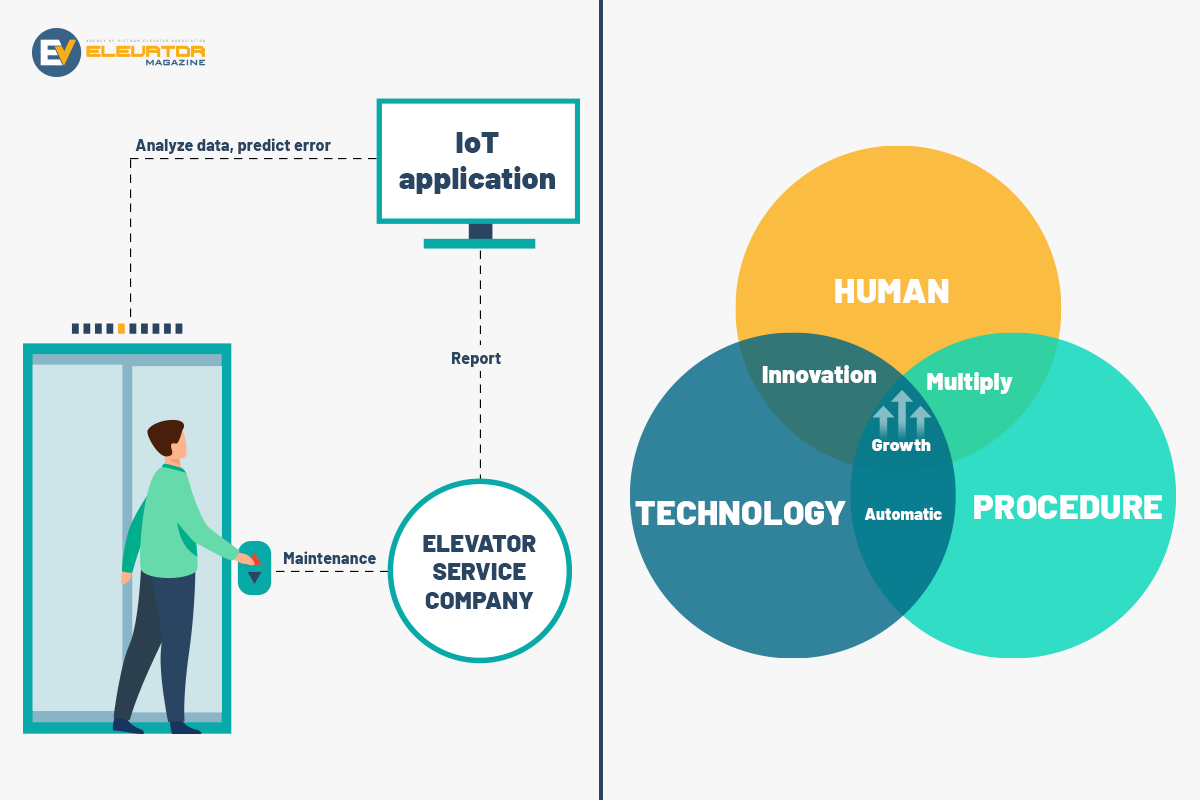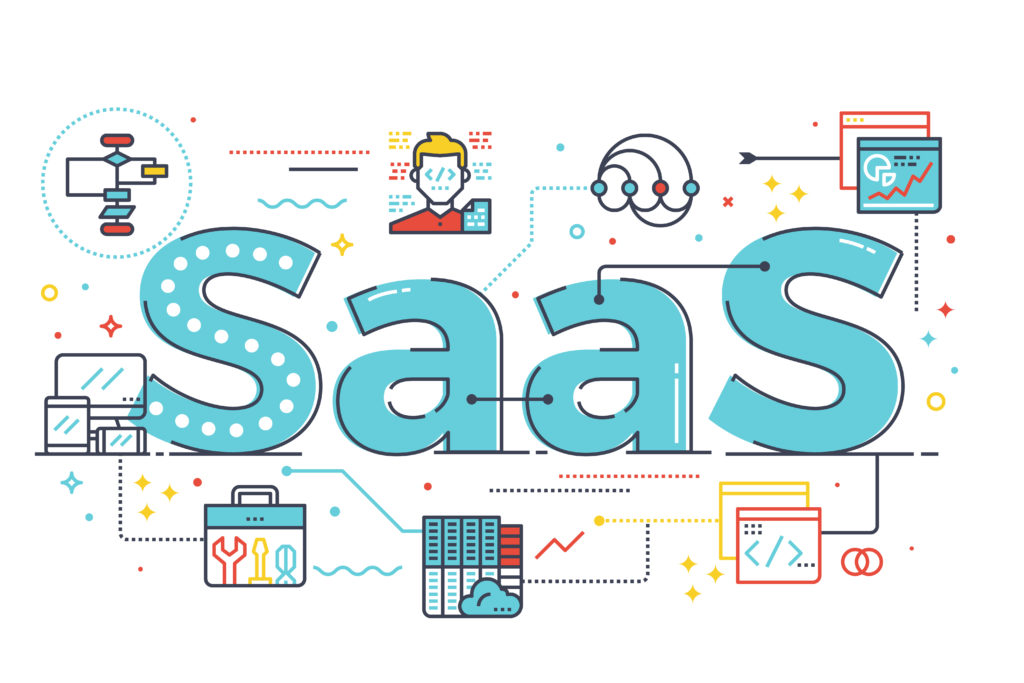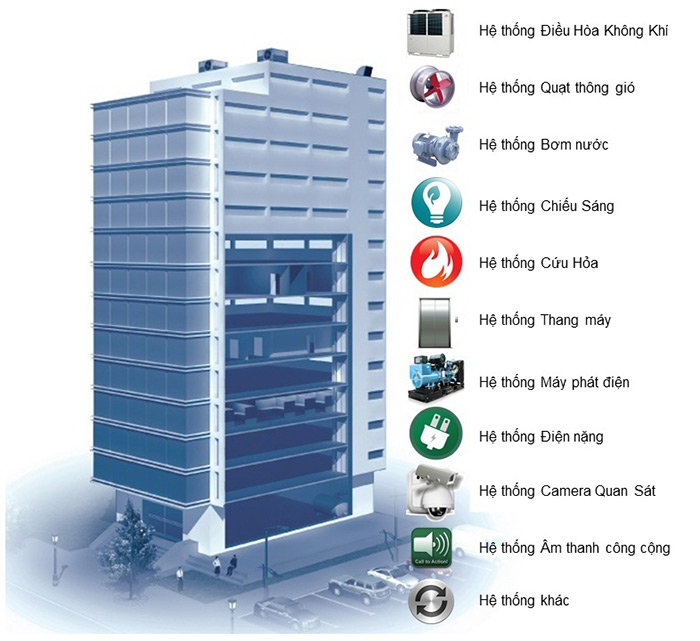
EM – We are at the beginning of a new era of elevator digitization and the elevator service industry is in the midst of a major change. With IoT platforms with many world-renowned solutions, elevators can virtually talk to us, letting us know when they need help. And combined with AI, the learned machines even advise technicians on causes and solutions.
We are at the beginning of a new era of elevator digitization and the elevator service industry is in the midst of a major change. With IoT platforms with many world-renowned solutions, elevators can virtually talk to us, letting us know when they need help. And combined with AI, the learned machines even advise technicians on causes and solutions.
Therefore, we can fix the elevator before the customer realizes there is a problem. The elevator service company doesn’t even need to make a call to the customer or track progress, because the great digital solutions in the elevator industry will always bring new value.
Digital services are software-defined services, delivered through an IoT platform. One of the great things about software-defined services is that they are flexible and can be developed quickly. This makes the system ideal for meeting evolving realities and meeting customer needs that drive digital transformation, especially in elevator service.

The forces that are truly driving innovation in elevator service today are meeting the needs of the customer – combined with a vision and knowledge shared among a group of capable people, trainer to create network and orientation to solving customer problems is the driving force behind a lot of innovation.
Dynamic engineering teams include the client’s IT, engineering, and cybersecurity team, a longtime industry technology partner, and dedicated, intelligent technologists.
Elevator industry innovation is often driven by the introduction of the New International Building Code. As a service is generated when there is a code that now requires the elevator car to be connected to the Internet for emergency responders, with a system connected car offering a whole new level of technical service. Digital intelligence and sophistication will help provide accurate, safe incident response and facilitate communication between responders and technical and security teams quickly, efficiently and in a timely manner.
New functions are constantly emerging for the elevator industry including different professional, operational and technical ways to deliver elevator software as a service (Software-as-a-Service – SaaS). This means new opportunities for suppliers and customers will improve and the elevator industry will continue to change to keep up with the pace of technology in the years to come. This has contributed more to the development of digital services – 5G is affected by the COVID-19 pandemic and the development of digital services, which certainly accelerates progress as well as apply new technologies to meet common needs on the basis of customer service requirements.

As in the recent global pandemic, the need for distancing in elevators to reduce the spread of COVID-19, solutions to configure elevator control and maneuvering to limit the number of people moving up and down during social distancing to ensure safety when using elevators in circulation in buildings is an urgent issue and must be handled as quickly as possible in that period to ensure proper circulation and distance according to regulations.
Having tens of thousands of elevators connected through an IoT platform is a great advantage, bringing ultimate benefits to customers, making core products and service contracts more attractive and lasting. The potential is limitless, and with software-defined services and cloud connectivity, maintenance services can be sold in different packages as other testing and monitoring services can help maintain elevator operations in new and different ways of management.
The growth of robotics digitization and interest in autonomous vehicles and increasing demand for modernization by enhancing cleaning and security services using security patrol robots and automatic floor cleaning machine will help customers find that these technologies and capabilities not only change the way customers equip their building transportation systems, but also create new requirements for how elevators can be controlled to equipped with component such as robots to enhance value-added services for the elevator industry.
The digitization of services in the future will lead to more intelligent services such as recognizing passengers and predicting where they will go from stored data, through AI facial recognition, etc. Elevator users, streaming services and in-cabin content will not only be tailored to the time of day, but will also be catered specifically to each passenger as they move through the elevator system.
Digital transformation is imperative, so we must continually foster dialogue to raise awareness of all that is and will become digital. Digitization presents not only opportunities but also risks that need to be addressed and taken seriously from digital developers and the brightest minds in the field of technological innovation.
Major global trends such as urbanization are happening very fast and the aging population is not going to disappear in the coming years. These two trends imply a global increase in tall buildings and continued demand for vertical transportation and the elevator market is and will continue to grow, both in terms of new installations and sales.
Therefore, the main digital priorities over the next few years will be to connect elevator systems from multiple manufacturers and software solutions by collecting data, to improve service quality for customers. The cooperation between elevator manufacturers and software manufacturers aims to digitize and optimize certain processes to create for every elevator installed a “Digital Copy” system ( Digital Twin). This means that every installed device will have a digital copy of all data from the design stage to installation at the Site.
Many people think that digitization is the confusing technical tool that engineers and geeks can best understand. However, digitization is just a means, not an end because digitization makes everything faster, more convenient and more accessible. People want to improve their lives with new products and services like Grab, Spotify, Airbnb, cashless payment system Momo, Zalo Pay, AI voice engine, etc. and we have been caught affected by these changes. Therefore, digitization is just a difference in how people accept and which urban environments tend to adopt earlier. And that is true not only in Vietnam but all over the world.
Buildings of the future will likely be much smarter than they are today. Advances in technology are allowing systems and devices in a building to communicate with each other, send real-time status updates to the storage cloud, and make convenience, safety and security, user safety and comfort are considered as priority. Sensors, connected systems, and big data analytics are driving the transformation for all types of technology, and the elevator industry must adapt to IoT trends to be included in the vast ecosystem of today consists of connected “things” that communicate with each other to unlock advanced functionality.
Currently, digitization is a big challenge for the elevator industry. Although elevator manufacturers and service providers are starting to innovate in this area to enable cloud-based predictive maintenance of storage and remote elevator access. The main obstacle to unlocking all the possibilities of digital technology lies in the lack of interoperability between systems, from one vendor to another, from one manufacturer to another manufacturer. This leads to a lack of centralized management and difficulty in controlling future elevator failure risks due to proprietary products from many different countries around the world.
In the construction industry, a new digitization trend is taking place that is information modeling which is the digital process for creating and managing information for a building. A cloud-based digital BIM model that integrates structured data to create a “digital twin” representation of an asset throughout its lifecycle, from planning and design to construction and operation.
In some countries around the world, BIM is required for all major or public construction projects. Even in countries where it is not yet mandatory, adoption rates have been steadily increasing, as the benefits of BIM make building owners increasingly inclined to require contractors to provide it. Due to this general trend in the construction industry, elevator and component manufacturers are now under pressure to include sensors and data analytics in their products and services.
For manufacturers and service providers, digitalization is the clear path of innovation for new products and services. The biggest benefit of digitization is expected to be evident in the services section, where a verifiable, easily storeable and searchable data path presents a great opportunity to transparency of maintenance activities to improve the safety and operation of elevators under maintenance and predict the possibility of failure through artificial intelligence.
Problems arise, however, when individual pieces of “smart” technology connected to this elevator need to communicate with other connected things as part of the building management system infrastructure (Building Management System – BMS) larger than the building. Smart elevators require interoperability as their interface with other systems in the building (such as fire alarm systems and access control systems) and also data flow connectivity for the company performing equipment maintenance.

European Elevator Association Digitalization Committee defines an interface as follows: “An interface is a shared boundary between two or more objects for the purpose of communication and information exchange. Interfaces can be physical (hardware) or non-physical (software) in nature. They are a tool to help with digitization, but also an opening point for additional threats that have never been seen before.”
Interfaces in elevator environments have existed for a long time, but typically they are complex, proprietary, and expensive. Now, with the advent of the IoT era, these interfaces are becoming cheaper and more widely used as demand increases.
Besides the platform and device, the interface is an integral part and object of the digitization process. External objects or the building management system connected to the lift through the interface can affect the performance of the installation.
Elevator and escalator standards vary widely, but most of them have to focus on safety and usability. The elevator industry is seriously lacking in Vietnam-specific open interface standards because most of the current technology is based on proprietary systems of manufacturers.
While the road ahead to open interface standards will be challenging, the long-term benefits for the industry from the move to digitization are expected to be far-reaching. Improvements in data analytics, energy efficiency, predictive maintenance, and overall performance will lead to a massive improvement, improving safety and reducing elevator and escalator downtime./.
(1) https://link.springer.com/chapter
(2)https://www.spiedigitallibrary.org/conference-proceedings-of-spie/12294/122943M/Elevator-intelligent-reservation-scheduling-system-based-on-digital-twin
Dr. Nguyen Hoang Hiep
Lincoln University, Malaysia/ Missouri (USA)/ Frederick Taylor (USA)



